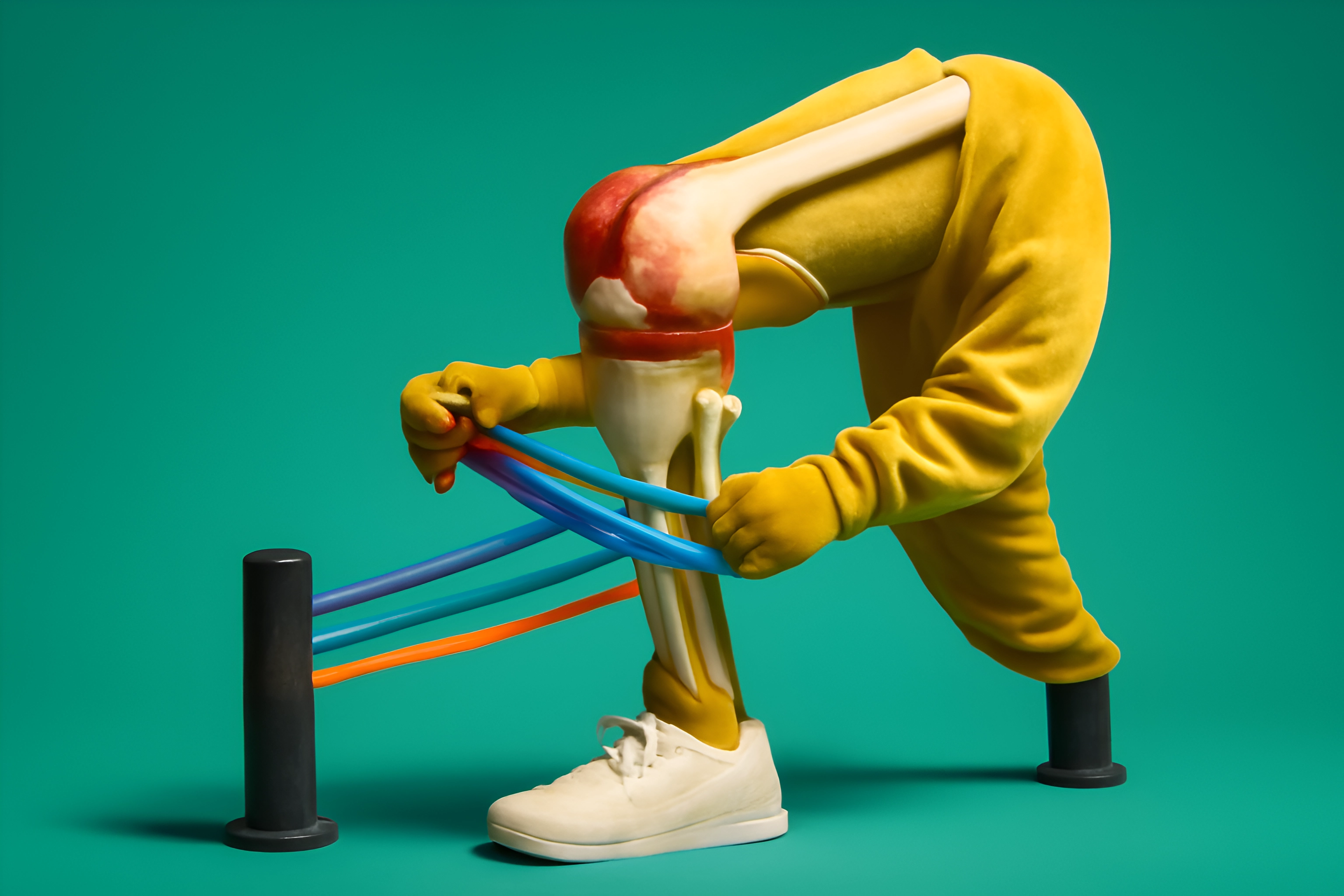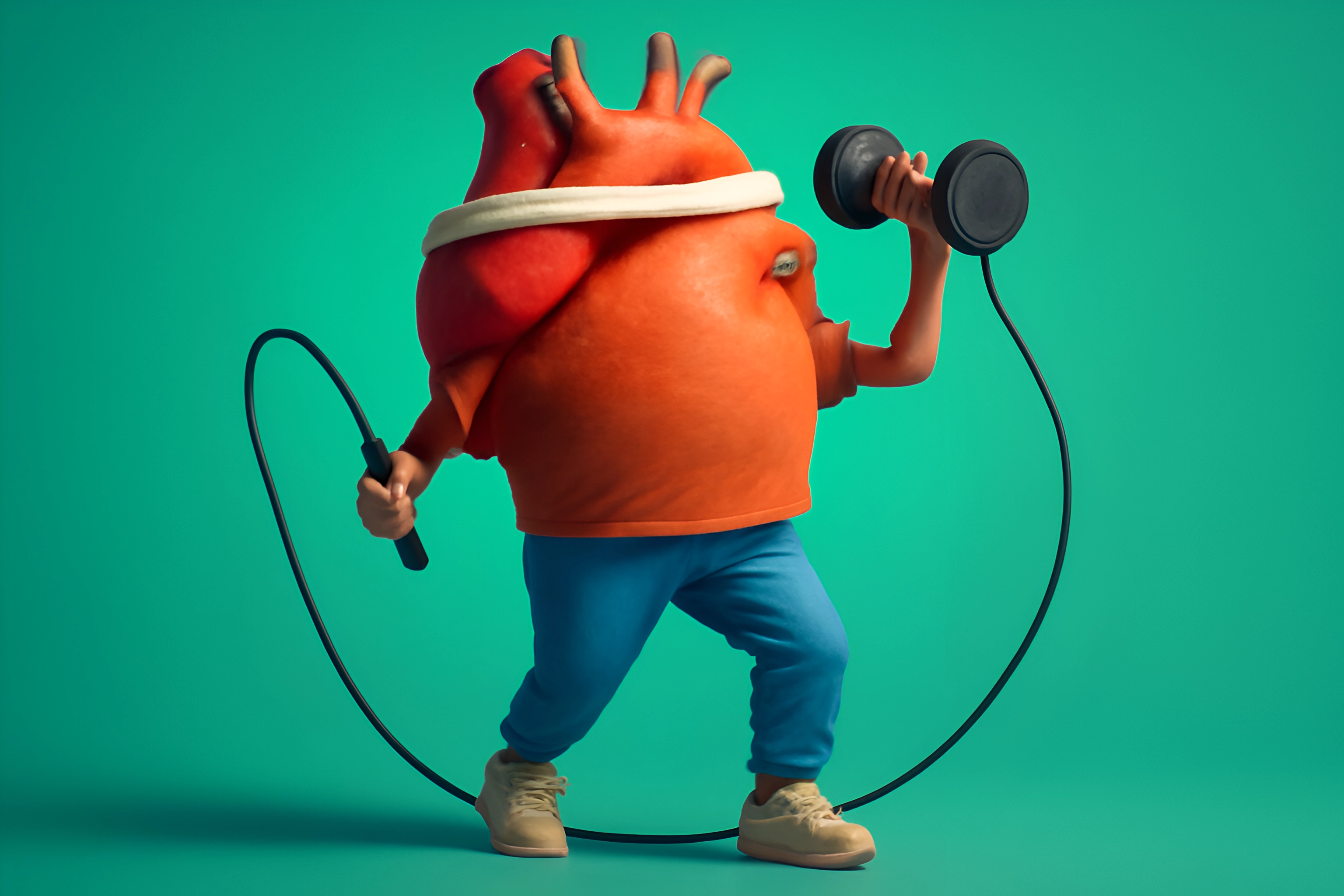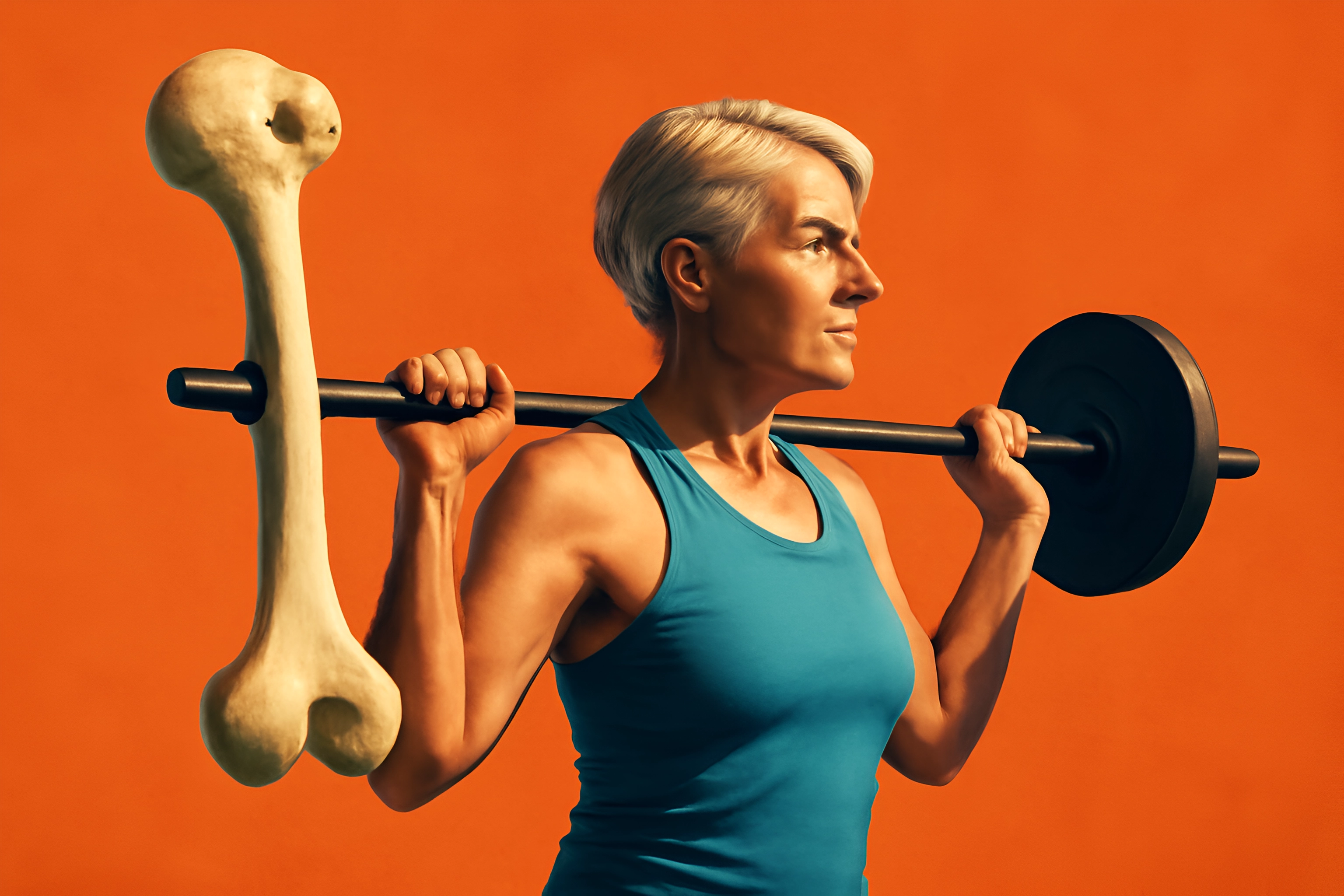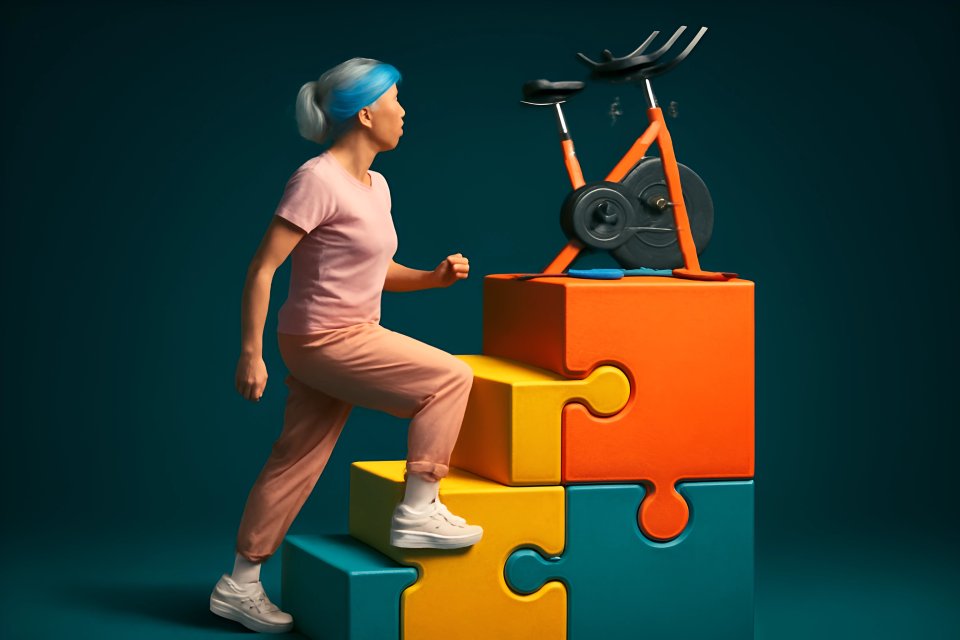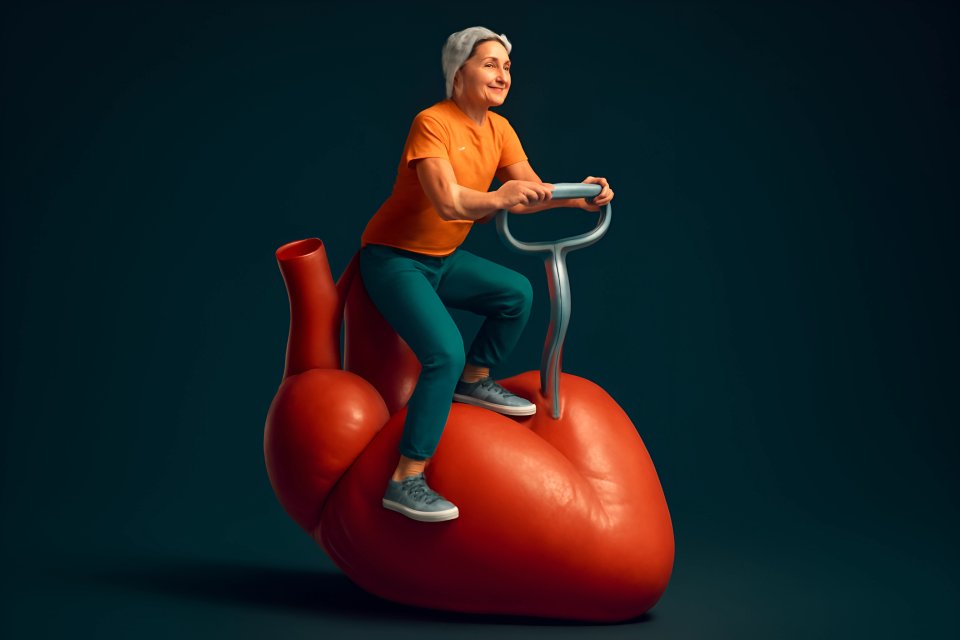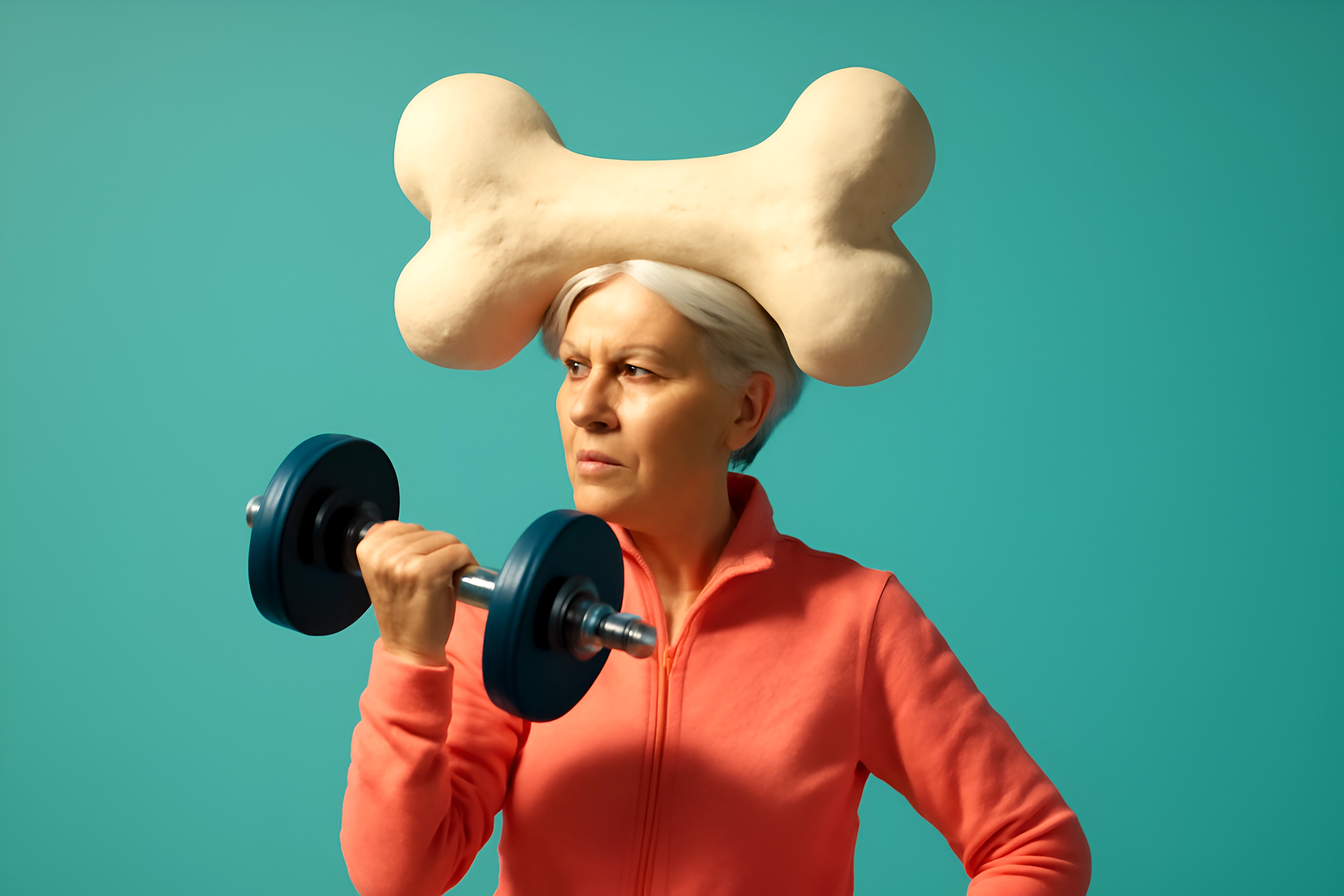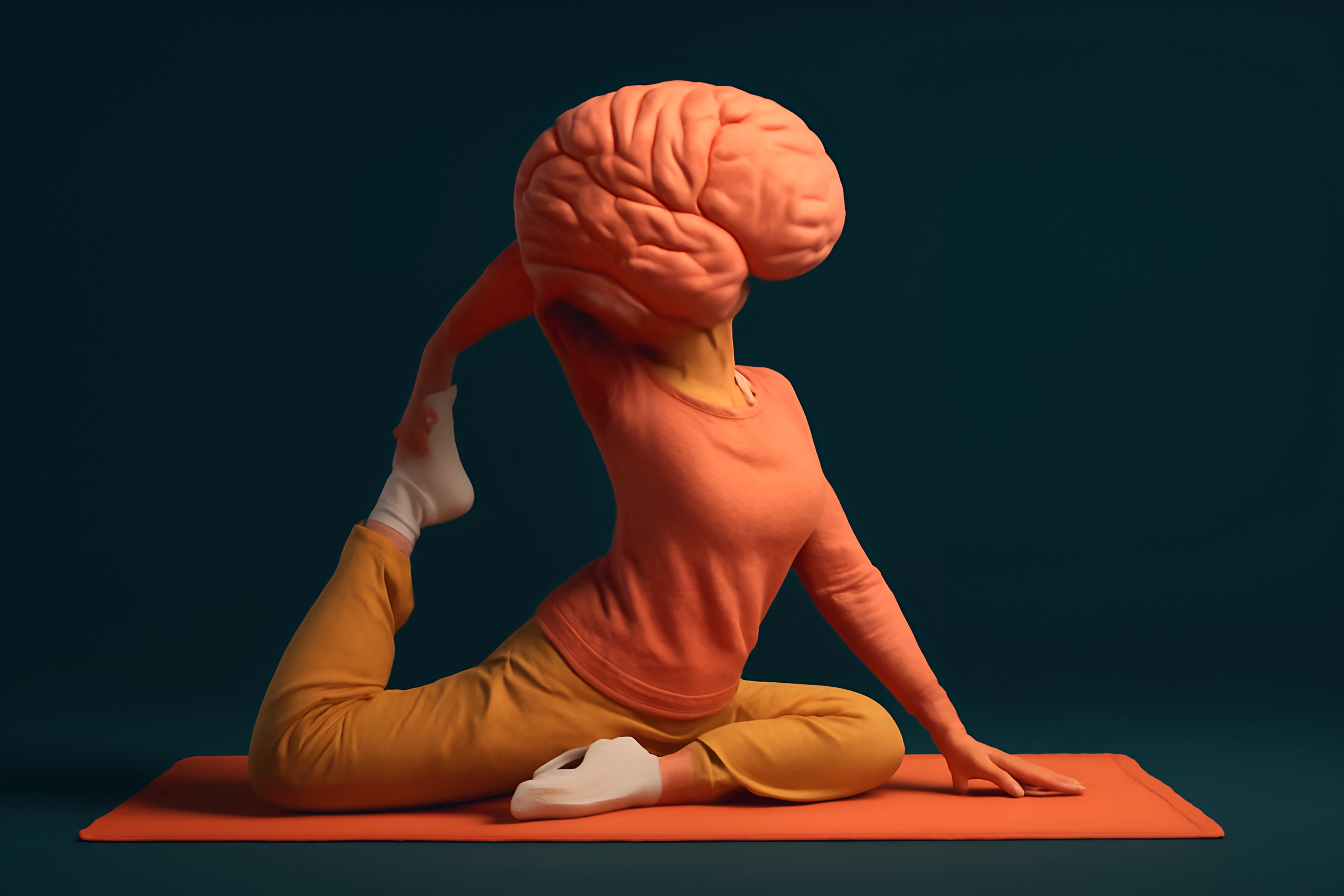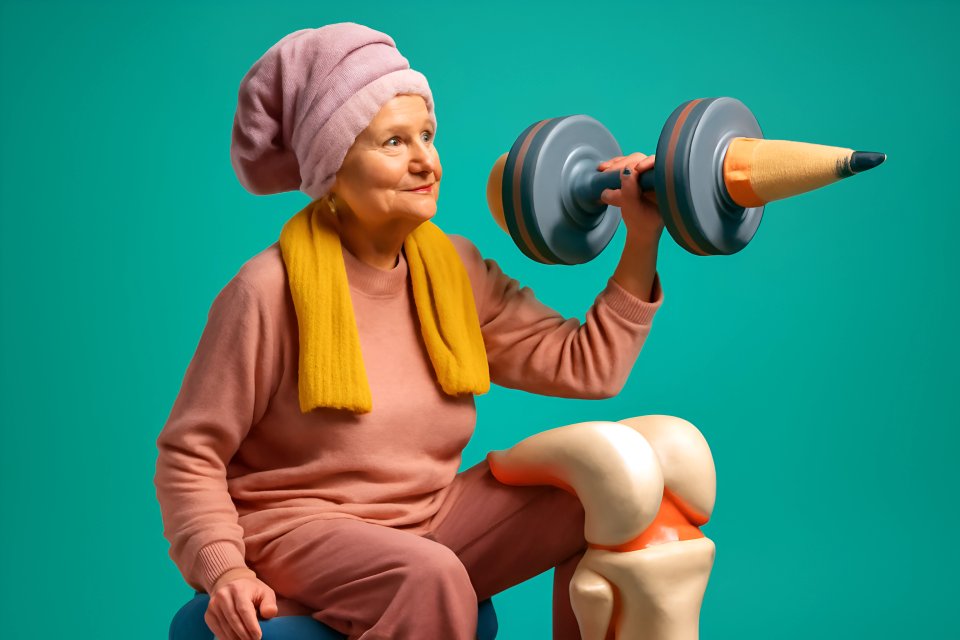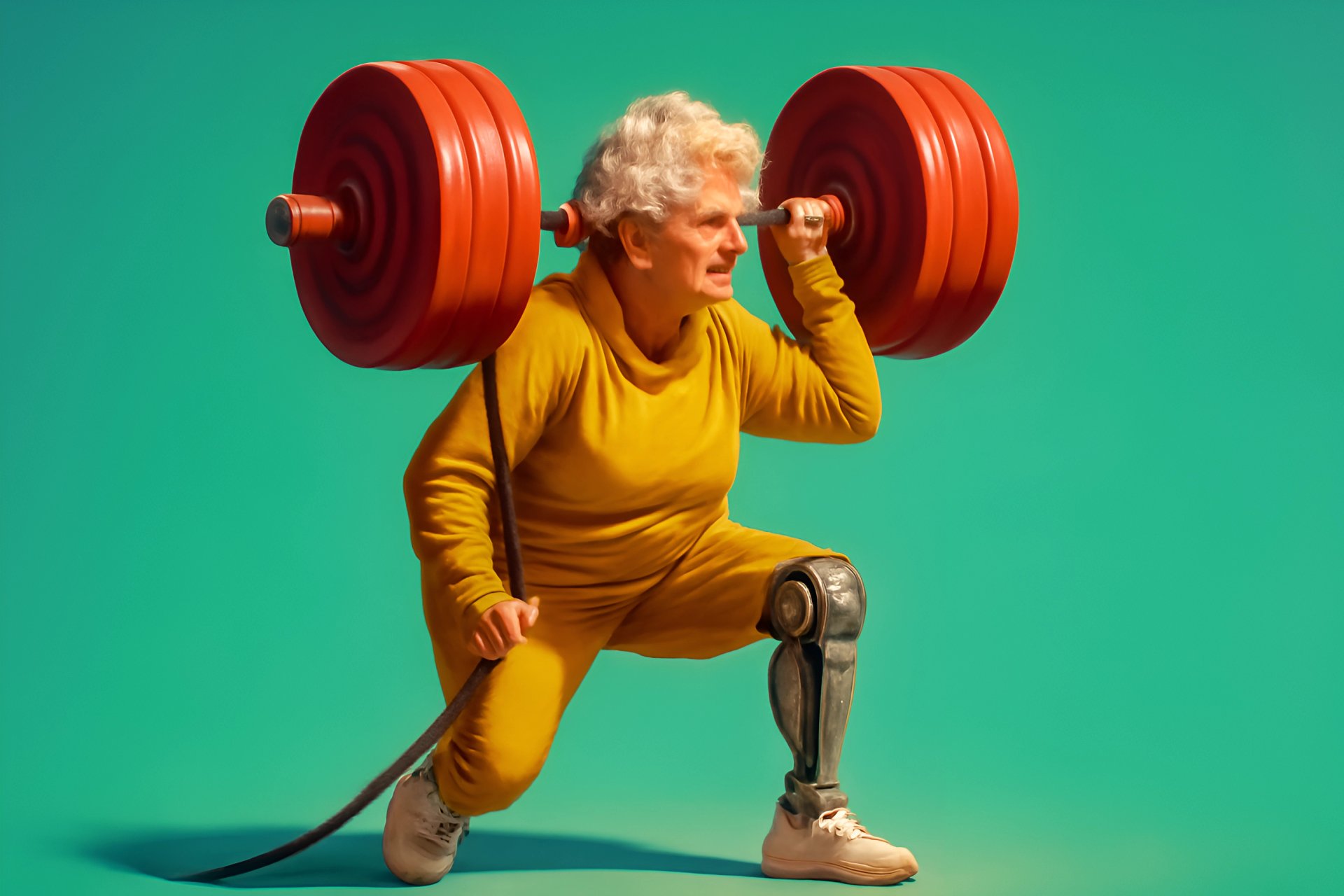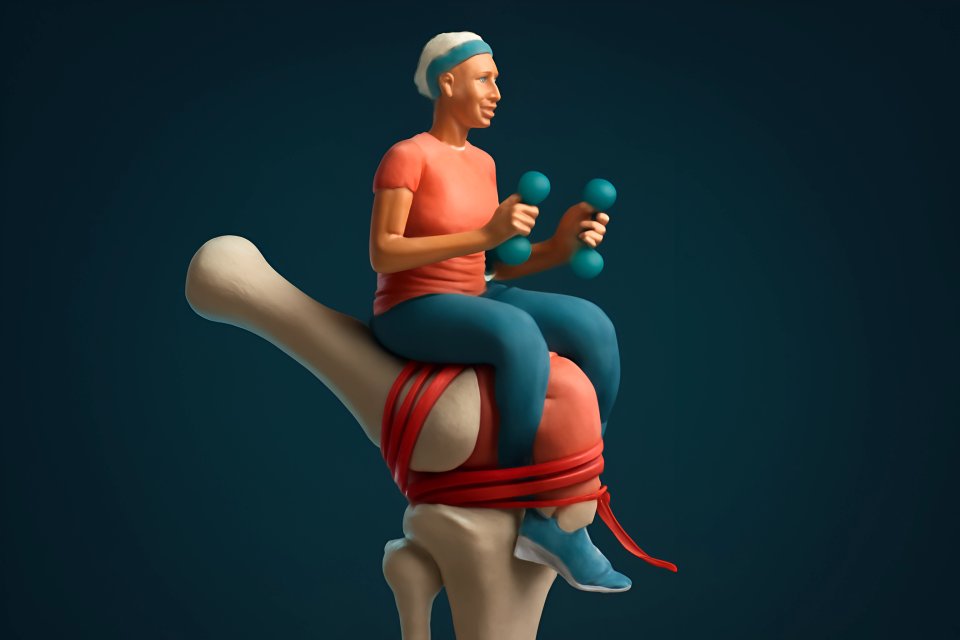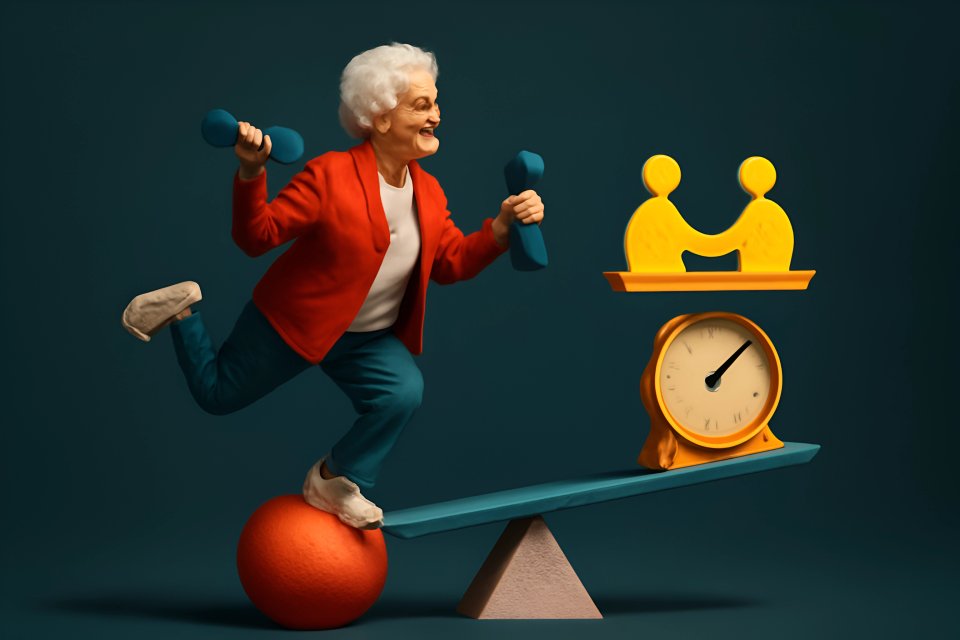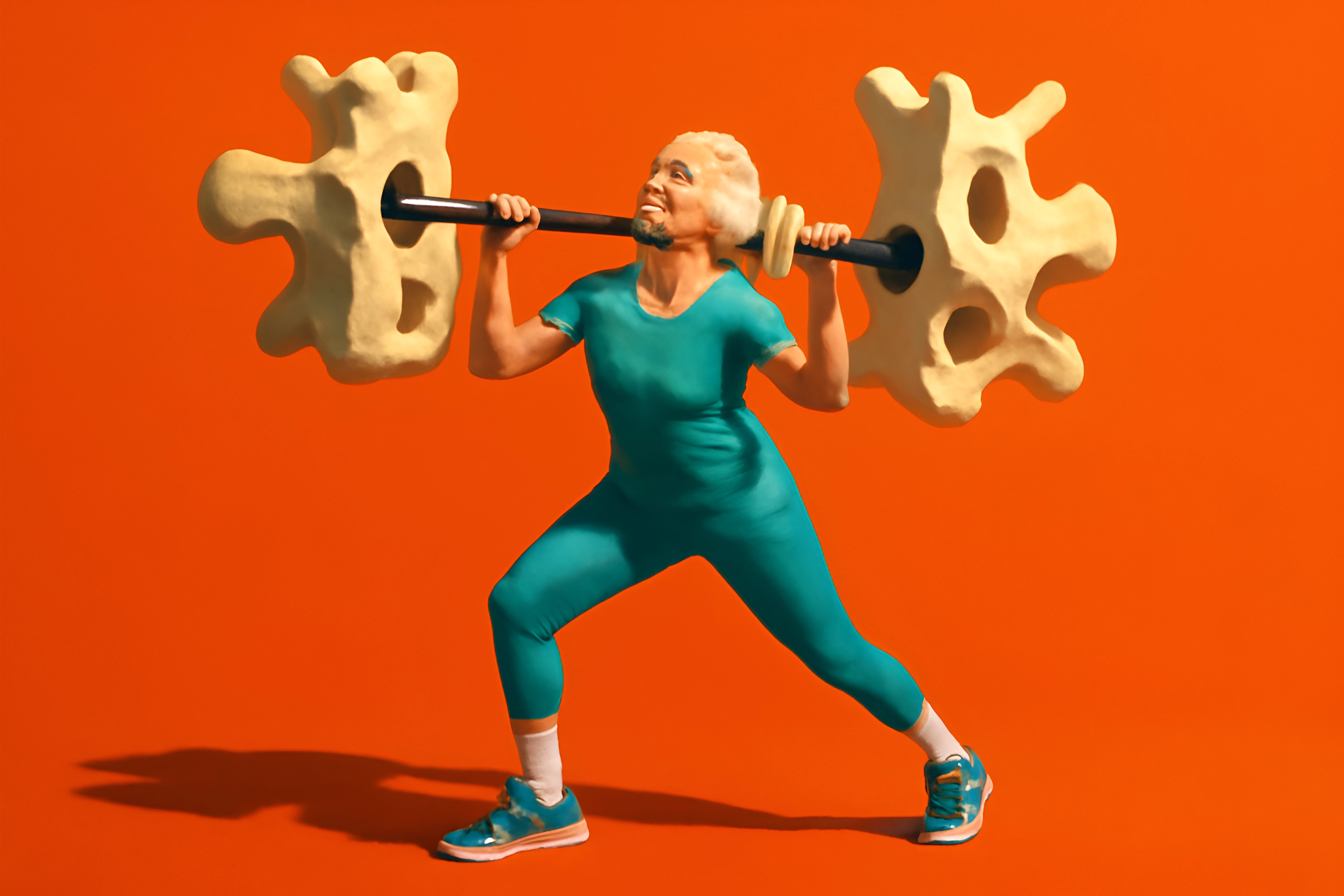
Introduction: Take Control of Your Bone Health, One Lift at a Time
Turning 50 isn't about slowing down; it's about getting smarter with our fitness. And when it comes to long-term health, nothing is smarter than building a strong foundation—literally. It’s the secret to staying independent, vibrant, and in control for decades to come.
We hear the whispers about bone health as we age, and for many, the word "osteoporosis" can sound like an unavoidable verdict. The reality is that after menopause, women can lose up to 20% of their bone density, but this is not a foregone conclusion. It is a challenge, and you have the power to meet it head-on with the most effective tool in your arsenal.
This is your definitive guide to fighting back. We are going to demystify strength training and show you exactly how to build a workout plan that is perfectly tailored to your body, your goals, and your current fitness level. By the end of this post, you will have a clear, actionable framework to forge a stronger, more resilient you.
Why Your Bones Love Strength Training: The Science Made Simple
The "Use It or Lose It" Principle for Your Skeleton
Have you ever wondered how your body knows where to build strength? It’s a brilliant, primal system governed by a simple rule: use it or lose it. This principle is explained by something called Wolff's Law, which, as Harvard Health Publishing clarifies, states that bones adapt to the loads placed upon them.
When you place stress on your bones through resistance exercise, your body responds by sending signals to build more bone tissue, making them denser and stronger. Think of it exactly like building muscle. You challenge your biceps with a curl, and they adapt by growing; you challenge your skeleton with a squat, and it adapts by fortifying itself from the inside out.
This isn't just a theory; it's a proven strategy. Studies show that a consistent strength training program can increase bone mineral density by nearly 2% in critical areas like the spine and hips. But the benefits don't stop there. A stronger frame means improved balance to prevent falls, increased muscle mass to power your daily life, and a boosted metabolism that supports overall wellness.
The 4 Pillars of Your Custom Strength Program
Creating a program that works for you isn't about complicated formulas or expensive equipment. It’s about following four simple, powerful pillars that put you in the driver's seat of your own health journey. This is where you build your personal blueprint for a stronger future.
Pillar 1: Assess Your Starting Point (Your Personal Baseline)
Before you lift a single weight, the most crucial first step is to know your starting line. The American College of Sports Medicine strongly recommends consulting with a doctor or physical therapist before beginning any new program, especially if you have a known diagnosis of osteopenia or osteoporosis. This isn't a barrier; it's your green light to proceed with confidence and safety.
Once you have medical clearance, you can perform a simple self-assessment at home to gauge your functional strength. The Chair Stand Test, where you time how many times you can stand up from a chair in 30 seconds without using your hands, is a fantastic measure of lower body strength. This baseline isn't about judgment; it's about gathering the data you need to build a program that is truly your own.
Pillar 2: Choose Your "Bone-Building" Exercises
When it comes to bone health, not all exercise is created equal. The Mayo Clinic explains there are two main types to consider: weight-bearing exercises and resistance training. Weight-bearing activities are anything you do on your feet that works against gravity, like brisk walking or dancing.
Resistance training, however, is the real powerhouse for actively building new bone. This is any exercise that makes your muscles work against an external force, whether it's a dumbbell, a resistance band, or your own body weight. This guide will focus on helping you create a powerful resistance training plan, as it is the most direct way to stimulate bone growth and build the functional strength that protects you.
Pillar 3: Structure Your Week for Success & Recovery
Consistency is your superpower, but so is rest. Your body doesn't get stronger during the workout; it gets stronger during the recovery period afterward. For this reason, experts recommend scheduling 2-3 non-consecutive days per week for strength training, with sessions lasting between 20-45 minutes.
This schedule gives your muscles and bones the time they need to repair and rebuild, which is the entire point of the process. The days in between aren't "off days"—they are "active recovery" days. This is the perfect time to incorporate other activities you love, like walking, stretching, or trying some of the activities in our guide to mastering sustainable low-impact workouts for seniors.
Pillar 4: Master Progressive Overload (The Secret to Getting Stronger Safely)
The secret to long-term success is a concept called progressive overload. It sounds technical, but it’s incredibly simple: gently and gradually increasing the challenge over time so your body never stops adapting. Without this, you'll hit a plateau where your body is no longer stimulated to grow stronger.
What does this look like in practice? It could mean adding two more repetitions to your set of squats. It might be picking up a slightly heavier dumbbell for your rows or reducing your rest time between sets by 15 seconds. These small, incremental changes are the engine of your progress, ensuring you get stronger safely and sustainably.
The Building Blocks: Essential Exercises & Modifications
Think of these exercises as your personal menu. Your goal is to build a full-body workout by picking 1-2 exercises from each category below. Remember, the key is to start where you are comfortable and focus on perfect form before adding any challenge.
Lower Body (Foundation for Stability)
Squats
- Why it works: This is the king of lower body exercises. It loads the hips and spine, two critical areas for bone density, and builds the leg strength essential for balance.
- Start Here (Modification): Chair Squats. Stand in front of a sturdy chair. Hinge at your hips and lower yourself until you gently tap the seat, then stand back up without using your hands.
- Level Up (Progression): Bodyweight Squats. Once you feel stable, remove the chair and focus on lowering your hips until your thighs are parallel to the floor.
Lunges
- Why it works: Lunges challenge your balance and work each leg independently, correcting strength imbalances and building stable hips.
- Start Here (Modification): Static Lunges with support. Hold onto a wall or chair for balance. Step one foot back and lower both knees to a 90-degree angle, then press back up.
- Level Up (Progression): Alternating Reverse Lunges. Step one foot back into a lunge, return to standing, and then switch legs.
Upper Body Push (Chest, Shoulders, Triceps)
Push-Ups
- Why it works: This classic move strengthens your chest, shoulders, and arms while also engaging your core to protect your spine.
- Start Here (Modification): Wall Push-Ups. Stand facing a wall, place your hands on it, and perform a push-up motion. The more upright you are, the easier it is.
- Level Up (Progression): Incline Push-Ups. Perform the same movement on a sturdy kitchen counter or the back of a sofa.
Upper Body Pull (Back & Biceps)
Rows
- Why it works: Rows are essential for building a strong upper back, which improves posture and supports spinal health. As the International Osteoporosis Foundation notes, good posture is vital for bone health.
- Start Here (Modification): Seated Resistance Band Rows. Sit tall in a chair, loop a band around your feet, and pull the handles toward your torso, squeezing your shoulder blades together.
- Level Up (Progression): Dumbbell Bent-Over Rows. With a light dumbbell in each hand, hinge at your hips (keeping your back flat) and pull the weights toward your chest.
Core (The Pillar of Support)
Plank
- Why it works: The plank builds deep core strength without putting any dangerous flexion on the spine, making it a much safer alternative to crunches.
- Start Here (Modification): Knee Plank. Hold a plank position on your forearms but keep your knees on the ground.
- Level Up (Progression): Forearm Plank. Progress to a full plank on your forearms and toes, keeping a straight line from your head to your heels.
Bird-Dog
- Why it works: This exercise improves stability and coordination by challenging you to keep your torso still while your limbs are moving.
- Start Here (Modification): Focus on slow, controlled movement. Extend the opposite arm and leg, hold for a second, and return to the start.
- Level Up (Progression): Add a 3-second pause at the full extension to increase the stability challenge.
For more ideas, especially if you're just starting out, explore our guide on adaptive resistance training for seniors.
Safety First: The Golden Rules for Training Over 50
Move with Confidence: Your Safety Checklist
Your goal is to build your body up, not break it down. Following these non-negotiable safety rules will ensure every workout is a step in the right direction. This is your personal promise to move with intelligence and care.
- Always Warm-Up: Start every session with 5-10 minutes of light cardio (like marching in place) and dynamic stretches (like arm circles) to prepare your body for work.
- Form Over Everything: It's better to lift a light weight with perfect form than a heavy weight with poor form. Watch videos, like this excellent demonstration from Dana-Farber Cancer Institute, to master your technique.
- Listen to Your Body: Learn to differentiate between the burn of muscle fatigue (which is good) and sharp, stabbing pain (which is a signal to stop immediately).
- Breathe! Never hold your breath during an exercise. Exhale on the hardest part of the movement (the exertion) and inhale on the easier part.
- What to Avoid: If you have been diagnosed with osteoporosis, it is critical to avoid exercises that involve excessive forward bending of the spine (like traditional sit-ups or toe touches) or heavily loaded twisting motions.
- Cool Down: End each workout with 5 minutes of gentle stretching to improve flexibility and help your body begin the recovery process.
For a deeper dive into protecting your body, our ultimate guide to joint-friendly exercise is an essential resource.
Your Weekly Blueprint: A Sample Plan to Get Started
Use this template as your starting point. Feel free to swap in different exercises from the "Building Blocks" section based on what feels best for your body. The goal is to create a routine you can stick with consistently.
| Day | Workout Plan | Details |
|---|---|---|
| Day 1 | Full Body Strength A | Warm-Up: Chair Squats: Wall Push-Ups: Seated Band Rows: Knee Plank: Cool Down: 5 min of gentle stretching |
| Day 2 | Active Recovery | A 30-minute brisk walk, gentle yoga, or stretching. |
| Day 3 | Full Body Strength B | Warm-Up: Static Lunges: Seated Dumbbell Overhead Press: Bird-Dog: Glute Bridges: Cool Down: 5 min of gentle stretching |
| Day 4 | Active Recovery | A bike ride, swimming, or a walk with a friend. |
| Day 5 | Full Body Strength A | Repeat Day 1's workout, trying to add one rep to each set. |
| Day 6 | Active Recovery | Choose your favorite low-impact activity. |
| Day 7 | Rest | Full rest and recovery. |
Conclusion: Your Strongest Chapter Starts Now
Let's be clear: strength training is your single most powerful tool in the fight against osteoporosis. We've shown you that building a custom program is not only possible but simple when you follow a clear framework. Personalization is your key to success, and starting safely with the right modifications is your path to building lasting strength.
This isn't just about preventing a fracture; it's about claiming your future. Building strength is a direct investment in your independence, your vitality, and your ability to live life on your own terms. You have the power to build a stronger, more resilient body at any age, and that journey begins with the very next choice you make.
What's one small step you'll take this week to start your strength journey? Share your goal in the comments below—we'd love to cheer you on.
